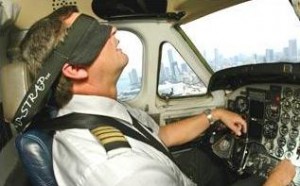 Doctors and health experts tell us all the time – people need eight hours of sleep a night to be at their best. Very few of us actually get that much sleep, but by and large, we’re able to function and do our jobs.
Doctors and health experts tell us all the time – people need eight hours of sleep a night to be at their best. Very few of us actually get that much sleep, but by and large, we’re able to function and do our jobs.
However, it seems that two professions in particular are required to get by on virtually no sleep, and they both have people’s lives in their hands. I’m talking about doctors and airline pilots. These are critical jobs with life-and-death responsibility, but there seems to be a macho pride among both groups about how little sleep on which they can get by.
This is a little crazy, no?
You can understand why airlines push to maximize the production they get out of their employees; with intense financial pressures on the industry, workforces are smaller, and that means flight crews can get stretched. Right now, the FAA is seeking to fine commuter airline Colgan Air for not giving its crews enough downtime; three years ago, a Colgan flight crashed, killing 50 people. The investigation found that pilot error was likely caused by fatigue.
Regardless of whether that fine stands up, it seems clear that pilots aren’t getting enough rest.
Consider this whirlwind, described by former US Airways pilot John Cox in USA Today:
“A “typical” U.S. – European trip flies from a U.S. gateway city to a European destination, then the crew flies the return trip the next day, which results in a 26 – 28 hour layover. There are cases where the crew will fly on to another destination the next day. An example would be an Air New Zealand crew flying Auckland to Los Angeles, then the next day flying the flight from Los Angeles to London. They would return to LAX the following day, then back to their home base of Auckland. A busy four/five-day (the international date line adds a day on the return) trip.”
I can’t imagine the pilot is at the top of his or her game on the final leg of that trip. Forget about flat out falling sleep; is the pilot able to make good decisions?
Now the good news – the industry does seem to be moving in the right direction. In December, the FAA adopted new regulations for flight crew downtime – with tighter restrictions on how long a day crews can work and an increase in off-duty time between shifts. Then again, those regulations won’t go into effect for two years and won’t impact flights not governed by the FAA.
Perhaps the best news for passengers is the 2010 congressional mandate for a “Fatigue Risk Management Plan,” which will require training updates every two years to teach pilots and crews how to mitigate fatigue and “sleep fundamentals.”









